This view of the Owner's Manual contains the very latest information, which may vary slightly from the printed Owner's Manual originally provided with your vehicle. It may also describe content that is not on or operates differently on your vehicle. Please consider the Owner's Manual originally provided with your vehicle as the primary source of information for your vehicle.

The information contained in this publication was correct at the time of release.In the interest of continuous development, we reserve the right to change specifications, design or equipment at any time without notice or obligation.No part of this publication may be reproduced, transmitted, stored in a retrieval system or translated into any language in any form by any means without our written permission.Errors and omissions excepted.
Copyright © 2024 Ford Motor Company
Using Adaptive Cruise Control (If Equipped)
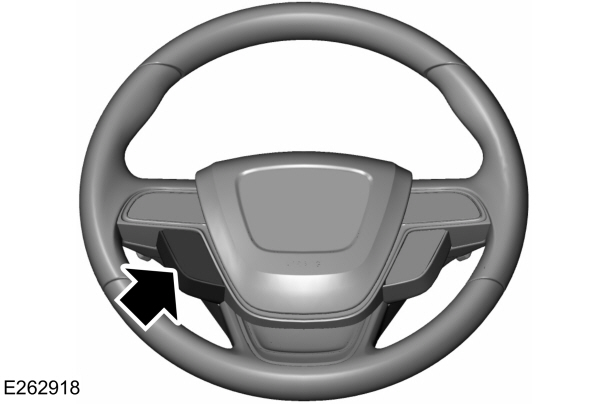
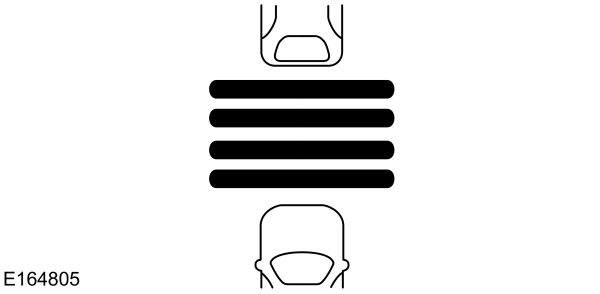
 Press and release the button.
Press and release the button.
 Press and release while keeping the brake pedal fully pressed.
Press and release while keeping the brake pedal fully pressed.
 Press and release the button to cycle through the four gap settings.
Press and release the button to cycle through the four gap settings.
 Press and release the button or tap the brake pedal.
Press and release the button or tap the brake pedal. Press and release the button.
Press and release the button.
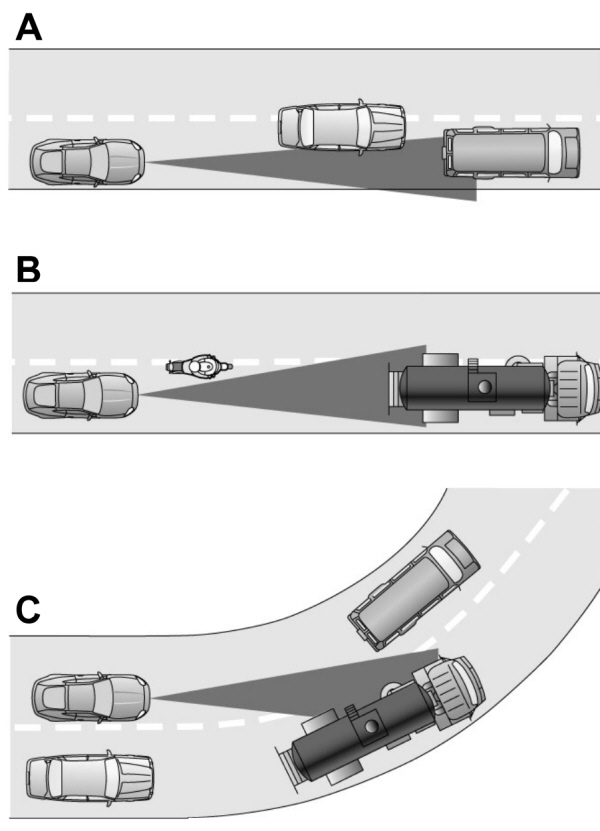
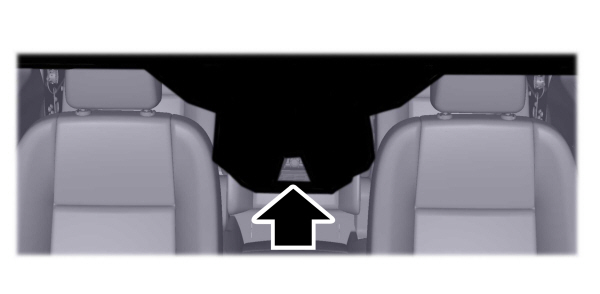
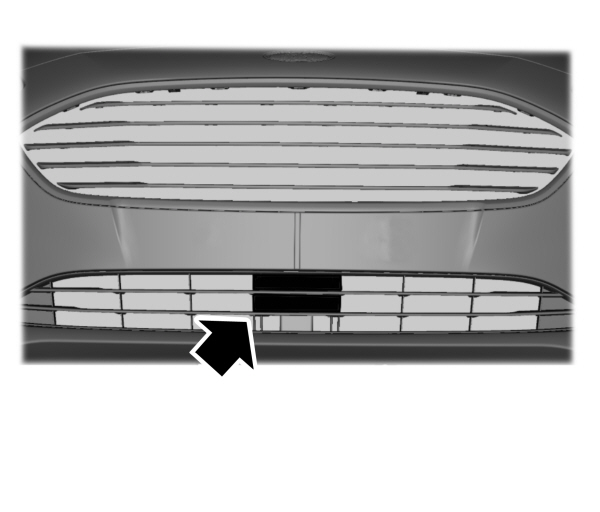
 Press and release the button.
Press and release the button. If your vehicle starts to slow down, you must contribute to the steering control and press and release the button to regain full system performance.Automatic cancellation can also occur if:
If your vehicle starts to slow down, you must contribute to the steering control and press and release the button to regain full system performance.Automatic cancellation can also occur if:


 WARNING:
You are responsible for controlling your vehicle at all times. The system is designed to be an aid and does not relieve you of your responsibility to drive with due care and attention. Failure to follow this instruction could result in the loss of control of your vehicle, personal injury or death.
WARNING:
You are responsible for controlling your vehicle at all times. The system is designed to be an aid and does not relieve you of your responsibility to drive with due care and attention. Failure to follow this instruction could result in the loss of control of your vehicle, personal injury or death. WARNING:
Pay close attention to changing road conditions such as entering or leaving a highway, on roads with intersections or roundabouts, roads without visible lanes of travel, roads that are winding, slippery, unpaved, or steep slopes.
WARNING:
Pay close attention to changing road conditions such as entering or leaving a highway, on roads with intersections or roundabouts, roads without visible lanes of travel, roads that are winding, slippery, unpaved, or steep slopes. WARNING:
Do not use the system in poor visibility, for example fog, heavy rain, spray or snow.
WARNING:
Do not use the system in poor visibility, for example fog, heavy rain, spray or snow. WARNING:
Do not use the system when towing a trailer that has aftermarket electronic trailer brake controls. Failure to follow this instruction could result in the loss of control of your vehicle, personal injury or death.
WARNING:
Do not use the system when towing a trailer that has aftermarket electronic trailer brake controls. Failure to follow this instruction could result in the loss of control of your vehicle, personal injury or death. WARNING:
Do not use tire sizes other than those recommended because this can affect the normal operation of the system. Failure to do so may result in a loss of vehicle control, which could result in serious injury.
WARNING:
Do not use tire sizes other than those recommended because this can affect the normal operation of the system. Failure to do so may result in a loss of vehicle control, which could result in serious injury. WARNING:
The system may not detect stationary or slow moving vehicles below
6 mph (10 km/h).
WARNING:
The system may not detect stationary or slow moving vehicles below
6 mph (10 km/h). WARNING:
The system does not detect pedestrians or objects in the road.
WARNING:
The system does not detect pedestrians or objects in the road. WARNING:
The system does not detect oncoming vehicles in the same lane.
WARNING:
The system does not detect oncoming vehicles in the same lane. WARNING:
The system is not a crash warning or avoidance system.
WARNING:
The system is not a crash warning or avoidance system. |
The system adjusts your vehicle speed to maintain the set gap between you and the vehicle in front of you in the same lane. You can select four gap settings.
The system uses a radar sensor that projects a beam directly in front of your vehicle.

The cruise controls are on the steering wheel. See
Cruise Control - Vehicles With: Cruise Control.
Switching Adaptive Cruise Control On
 For vehicles without Speed Limiter, press and release the button.
For vehicles without Speed Limiter, press and release the button. |  For vehicles with Speed Limiter, press and release the button.
For vehicles with Speed Limiter, press and release the button. |
The indicator, current gap setting and set speed appear in the information display.

Setting the Adaptive Cruise Speed
Drive to the speed you prefer.
 Press and release the button.
Press and release the button.Take your foot off the accelerator pedal.
The indicator, current gap setting and set speed appear in the information display.

A vehicle graphic illuminates if there is a vehicle detected in front of you.
Note:
When adaptive cruise control is active, the speedometer may vary slightly from the set speed displayed in the information display.
Setting the Adaptive Cruise Speed When Your Vehicle is Stationary
Follow a vehicle to a complete stop.
 Press and release while keeping the brake pedal fully pressed.
Press and release while keeping the brake pedal fully pressed.The set speed adjusts to
20 mph (30 km/h).
The indicator, current gap setting and set speed appear in the information display.
Following a Vehicle
 WARNING:
When following a vehicle that is braking, your vehicle does not always decelerate quickly enough to avoid a crash without driver intervention. Apply the brakes when necessary. Failure to follow this instruction could result in personal injury or death.
WARNING:
When following a vehicle that is braking, your vehicle does not always decelerate quickly enough to avoid a crash without driver intervention. Apply the brakes when necessary. Failure to follow this instruction could result in personal injury or death. WARNING:
The system only warns of vehicles detected by the radar sensor. In some cases there may be no warning or a delayed warning. Apply the brakes when necessary. Failure to follow this instruction could result in personal injury or death.
WARNING:
The system only warns of vehicles detected by the radar sensor. In some cases there may be no warning or a delayed warning. Apply the brakes when necessary. Failure to follow this instruction could result in personal injury or death. |
When a vehicle ahead of you enters the same lane or a slower vehicle is ahead in the same lane, the vehicle speed adjusts to maintain a preset gap distance. A vehicle graphic illuminates in the instrument cluster.
Note:
The brakes may emit noise when applied by the system.
Note:
When you are following a vehicle and you switch on a direction indicator, adaptive cruise control may provide a small temporary acceleration to help you pass.
Your vehicle maintains a consistent gap from the vehicle ahead until:- The vehicle in front of you accelerates to a speed above the set speed.
- The vehicle in front of you moves out of the lane you are in.
- You set a new gap distance.
The system applies the brakes to slow your vehicle to maintain a safe gap distance from the vehicle in front. The system only applies limited braking. You can override the system by applying the brakes.
If the system determines that its maximum braking level is not sufficient, an audible warning sounds, a message appears in the information display and an indicator flashes when the system continues to brake. Take immediate action.
Following a Vehicle to a Complete Stop
If your vehicle follows a vehicle to a complete stop and remains stationary for less than three seconds, your vehicle accelerates from a stationary position to follow the vehicle ahead.
 If your vehicle follows a vehicle to a complete stop and remains stationary for more than three seconds, press and release the button to follow the vehicle ahead. Or press the accelerator pedal.
If your vehicle follows a vehicle to a complete stop and remains stationary for more than three seconds, press and release the button to follow the vehicle ahead. Or press the accelerator pedal. |
Setting the Gap Distance
You can decrease or increase the distance between your vehicle and the vehicle in front by pressing the gap control.
 Press and release the button to cycle through the four gap settings.
Press and release the button to cycle through the four gap settings.
The selected gap appears in the information display as shown by the bars in the image.
Note:
The gap setting is time dependent and therefore the distance adjusts with your vehicle speed.
Note:
It is your responsibility to select a gap appropriate to the driving conditions.
Adaptive Cruise Control Gap Settings
| Graphic Display, Bars Indicated Between Vehicles | Distance Gap | Dynamic Behavior |
|---|---|---|
| 1 | Closest. | Sport. |
| 2 | Close. | Normal. |
| 3 | Medium. | Normal. |
| 4 | Far. | Comfort. |
Each time you switch the system on, it selects the last chosen gap setting.
Overriding the Set Speed
 WARNING:
If you override the system by pressing the accelerator pedal, it does not automatically apply the brakes to maintain a gap from any vehicle ahead.
WARNING:
If you override the system by pressing the accelerator pedal, it does not automatically apply the brakes to maintain a gap from any vehicle ahead. |
When you press the accelerator pedal, you override the set speed and gap distance.
 Use the accelerator pedal normally to intentionally exceed the set speed limit.
Use the accelerator pedal normally to intentionally exceed the set speed limit.When you override the system, the green indicator light illuminates and the vehicle graphic does not appear in the information display. The system resumes operation when you release the accelerator pedal. The vehicle speed decreases to the set speed, or a lower speed if following a slower vehicle. |
Changing the Set Speed
 Press and release to increase the set speed in small increments.
Press and release to increase the set speed in small increments. |  Press and release to decrease the set speed in small increments.
Press and release to decrease the set speed in small increments. |
Press and hold either button to change the set speed in large increments. Release the button when you reach the speed you prefer.
The system may apply the brakes to slow the vehicle to the new set speed. The set speed displays continuously in the information display when the system is active.
Canceling the Set Speed
 Press and release the button or tap the brake pedal.
Press and release the button or tap the brake pedal.Note:
The system remembers the set speed.
Resuming the Set Speed
 Press and release the button.
Press and release the button. Your vehicle speed returns to the previously set speed and gap setting. The set speed displays continuously in the information display when the system is active.
Note:
Only use resume if you are aware of the set speed and intend to return to it.
Automatic Cancellation
Automatic cancellation can also occur when:- The tires lose traction.
- You apply the parking brake.
Park Brake Application
Automatic parking brake application and cancellation occurs if:- You unbuckle the seatbelt and open the driver door after you stop your vehicle.
- You hold your vehicle at a stop continuously for more than three minutes.
Hilly Condition Usage
You should select a lower gear when the system is active in situations such as prolonged downhill driving on steep grades, for example in mountainous areas. The system needs additional engine braking in these situations to reduce the load on the vehicle’s regular brake system to prevent it from overheating.
Note:
An audible alarm sounds and the system shuts down if it applies brakes for an extended period of time. This allows the brakes to cool. The system functions normally again after the brakes cool.
Switching Adaptive Cruise Control Off
 For vehicles without Speed Limiter, press and release the button when the system is in standby mode or switch the ignition off.
For vehicles without Speed Limiter, press and release the button when the system is in standby mode or switch the ignition off. |  For vehicles with Speed Limiter, press and release the button when the system is in standby mode or switch the ignition off.
For vehicles with Speed Limiter, press and release the button when the system is in standby mode or switch the ignition off. |
Note:
You erase the set speed when you switch the system off.
Detection Issues
 WARNING:
On rare occasions, detection issues can occur due to the road infrastructures, for example bridges, tunnels and safety barriers. In these cases, the system may brake late or unexpectedly. At all times, you are responsible for controlling your vehicle, supervising the system and intervening, if required.
WARNING:
On rare occasions, detection issues can occur due to the road infrastructures, for example bridges, tunnels and safety barriers. In these cases, the system may brake late or unexpectedly. At all times, you are responsible for controlling your vehicle, supervising the system and intervening, if required. WARNING:
If the system malfunctions, have your vehicle checked as soon as possible.
WARNING:
If the system malfunctions, have your vehicle checked as soon as possible. |
The radar sensor has a limited field of view. It may not detect vehicles at all or detect a vehicle later than expected in some situations. The lead vehicle graphic does not illuminate if the system does not detect a vehicle in front of you.

Detection issues can occur: AB C |
In these cases, the system may brake late or unexpectedly. You should stay alert and take action when necessary.
If something hits the front end of your vehicle or damage occurs, the radar-sensing zone may change. This could cause missed or false vehicle detection.
Optimal system performance requires a clear view of the road by the windshield-mounted camera.
Optimal performance may not occur if:
- The camera is blocked.
- There is poor visibility or lighting conditions.
- There are bad weather conditions.
System Not Available
Conditions that can cause the system to deactivate or prevent the system from activating when requested include:- A blocked sensor.
- High brake temperature.
- A failure in the system or a related system.
Blocked Sensor
 WARNING:
The system may not operate properly if the sensor is blocked. Keep the windshield free from obstruction.
WARNING:
The system may not operate properly if the sensor is blocked. Keep the windshield free from obstruction. |

The camera is mounted behind the interior mirror.

The sensor is in the lower grille.
Note:
You cannot see the sensor. It is behind a fascia panel.
A message displays if something obstructs the camera or the sensor. When something blocks the sensor, the system cannot detect a vehicle ahead and does not function.
Note:
Keep the front of your vehicle free of dirt, metal badges or objects. Vehicle front protectors, aftermarket lights, additional paint or plastic coatings could also degrade sensor performance.
Possible Causes and Actions for This Message Displaying:
| Cause | Action |
|---|---|
| The surface of the radar is dirty or obstructed. | Clean the grille surface in front of the radar or remove the object causing the obstruction. |
| The surface of the radar is clean but the message remains in the display. | Wait a short time. It may take several minutes for the radar to detect that it is free from obstruction. |
| Heavy rain or snow is interfering with the radar signals. | Do not use the system in these conditions because it may not detect any vehicles ahead. |
| Water, snow or ice on the surface of the road may interfere with the radar signals. | Do not use the system in these conditions because it may not detect any vehicles ahead. |
| You are in a desert or remote area with no other vehicles and no roadside objects. | Wait a short time or switch to normal cruise control. |
| Radar is out of alignment due to a front-end impact. | Contact an authorized dealer to have the radar checked for proper coverage and operation. |
| The windshield in front of the camera is dirty or obstructed. | Clean the outside of the windshield in front of the camera. |
| The windshield in front of the camera is clean, but the message remains in the display. | Wait a short time. It may take several minutes for the camera to detect that it is free from obstruction. |
Due to the nature of radar technology, it is possible to get a blockage warning with no actual block. This happens, for example, when driving in sparse rural or desert environments. A false blocked condition either self clears, or clears after you restart your vehicle.
Switching to Normal Cruise Control
 WARNING:
Normal cruise control will not brake when your vehicle is approaching slower vehicles. Always be aware of which mode you have selected and apply the brakes when necessary.
WARNING:
Normal cruise control will not brake when your vehicle is approaching slower vehicles. Always be aware of which mode you have selected and apply the brakes when necessary. |
You can change from adaptive cruise control to normal cruise control through the information display.
 The cruise control indicator light replaces the adaptive cruise control indicator light if you select normal cruise control.The gap setting does not display, and the system does not respond to lead vehicles.Automatic braking remains active to maintain set speed.
The cruise control indicator light replaces the adaptive cruise control indicator light if you select normal cruise control.The gap setting does not display, and the system does not respond to lead vehicles.Automatic braking remains active to maintain set speed. |
Using Lane Centering
 WARNING:
You are responsible for controlling your vehicle at all times. The system is designed to be an aid and does not relieve you of your responsibility to drive with due care and attention. Failure to follow this instruction could result in the loss of control of your vehicle, personal injury or death.
WARNING:
You are responsible for controlling your vehicle at all times. The system is designed to be an aid and does not relieve you of your responsibility to drive with due care and attention. Failure to follow this instruction could result in the loss of control of your vehicle, personal injury or death. WARNING:
Pay close attention to changing road conditions such as entering or leaving a highway, on roads with intersections or roundabouts, roads without visible lanes of travel, roads that are winding, slippery, unpaved, or steep slopes.
WARNING:
Pay close attention to changing road conditions such as entering or leaving a highway, on roads with intersections or roundabouts, roads without visible lanes of travel, roads that are winding, slippery, unpaved, or steep slopes. WARNING:
Do not use the system in poor visibility, for example fog, heavy rain, spray or snow.
WARNING:
Do not use the system in poor visibility, for example fog, heavy rain, spray or snow. WARNING:
Large contrasts in outside lighting can limit sensor performance.
WARNING:
Large contrasts in outside lighting can limit sensor performance. WARNING:
The sensor may incorrectly track lane markings as other structures or objects. This can result in a false or missed warning.
WARNING:
The sensor may incorrectly track lane markings as other structures or objects. This can result in a false or missed warning. WARNING:
Do not use the system when towing a trailer. Failure to follow this instruction could result in the loss of control of your vehicle, personal injury or death.
WARNING:
Do not use the system when towing a trailer. Failure to follow this instruction could result in the loss of control of your vehicle, personal injury or death. |
The system is designed to help keep your vehicle in the center of the lane by applying continuous assistance steering torque input toward the lane center on highways.
Note:
The assistance steering torque is limited and may not be sufficient for all driving situations.
Note:
In exceptional conditions, the system may deviate from the center line.
The system only activates when the all of the following occur:- You have adaptive cruise control with stop-and-go on.
- The system detects both lane markings.
- Your hands are on the steering wheel at all times.
Note:
The system may not function if the front camera or sensor is blocked or not available.
Switching Lane Centering On and Off
 Press and release the button.
Press and release the button.The indicator appears in the information display. When the system is on, the color of the indicator changes to indicate the system status.
Gray indicates the system is on but inactive.
Green indicates the system is active and applying assistance steering torque input to keep your vehicle in the center of the lane.
The system activates when it detects valid lane markings. If it does not detect valid lane markings, the system stays inactive until valid markings are available.
The system may not correctly operate in any of the following conditions:- Your vehicle is not centered in the lane.
- The lane is too narrow or wide.
- The system does not detect at least one lane marking or when lanes merge or split.
- You switch the direction indicator on.
- Limited steering torque input is applied.
- Areas under construction or new infrastructure.
- When modifications to the steering system have been made.
- When using a spare tire.
When the system is active and detects no steering activity for a certain period of time, the system alerts you to put your hands on the steering wheel. If you do not react to the warnings the system cancels and slows your vehicle down to idle speeds while maintaining steering control.
The system also alerts you if your vehicle crosses lane markings without detected steering activity.
Note:
The system may detect a light grip or touch on the steering wheel as hands-off driving.
You can override the system at any time by steering your vehicle.
Automatic Cancellation
When an external condition cancels the system, for example, no lane markings available, a tone sounds and a message appears in the information display.
 If your vehicle starts to slow down, you must contribute to the steering control and press and release the button to regain full system performance.
If your vehicle starts to slow down, you must contribute to the steering control and press and release the button to regain full system performance.- The lane becomes too wide or too narrow.
- The system cannot detect valid lane markings.
- Lane markings are crossed.
Note:
The system disables until the next key cycle if your vehicle slows down due to driver inactivity twice within a key cycle.
Blocked Sensor
 WARNING:
The system may not operate properly if the sensor is blocked. Keep the windshield free from obstruction.
WARNING:
The system may not operate properly if the sensor is blocked. Keep the windshield free from obstruction. |

The camera is mounted behind the interior mirror.

The sensor is in the lower grille.
Note:
You cannot see the sensor. It is behind a fascia panel.
Note:
Keep the front of your vehicle free of dirt, metal badges or objects. Vehicle front protectors, aftermarket lights, additional paint or plastic coatings could also degrade sensor performance.
Thank You For Your Feedback
